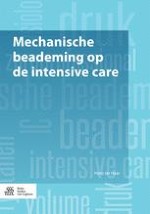2017 | OriginalPaper | Hoofdstuk
10. Complicaties en andere gevolgen van mechanische beademing
Auteur : Hans ter Haar
Gepubliceerd in: Mechanische beademing op de intensive care
Uitgeverij: Bohn Stafleu van Loghum
2017 | OriginalPaper | Hoofdstuk
Auteur : Hans ter Haar
Gepubliceerd in: Mechanische beademing op de intensive care
Uitgeverij: Bohn Stafleu van Loghum
Print ISBN: 978-90-368-1589-5
Elektronisch ISBN: 978-90-368-1590-1
Copyright: 2017
